Archives
-
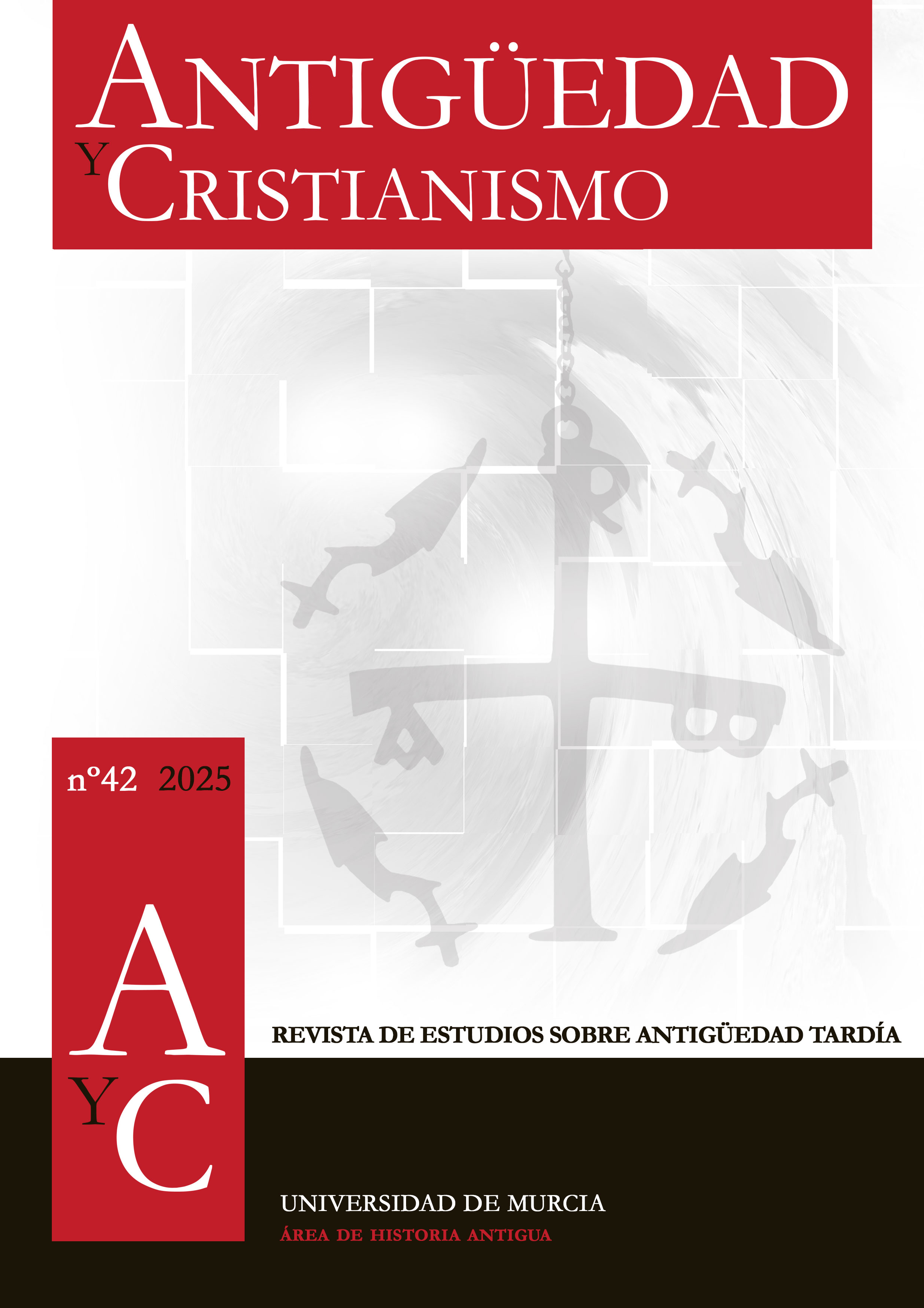
No. 42 (2025)
- La colaboración de los santos como recurso literario en la poesía latina de tema constructivo
- Propuesta de reconstrucción de la cadena de transmisión documental de un pasaje del siglo VII en el Breviarium del patriarca Nicéforo
- Cerámica de cocina bizantina del monasterio de Qubbet el-Hawa en Asuán (Egipto)
- El paganismo en la Hispania Tardorromana en la obra De correctione Rusticorum de Martín de Braga
- Proyecto Almenara. Adelanto a las primeras prospecciones arqueológicas en Paterna del Madera (Albacete)
- La vocación monástica y ascética en la Hispania visigoda: motivaciones y movilidad geográfica
- Justificar lo injustificable: santidad y violencia religiosa en la Antigüedad tardía. El caso de la Vita Porphyrii de Marco Diácono
- Spolia romanos, visigodos y otras piezas de acarreo en el Real Alcázar de Sevilla -
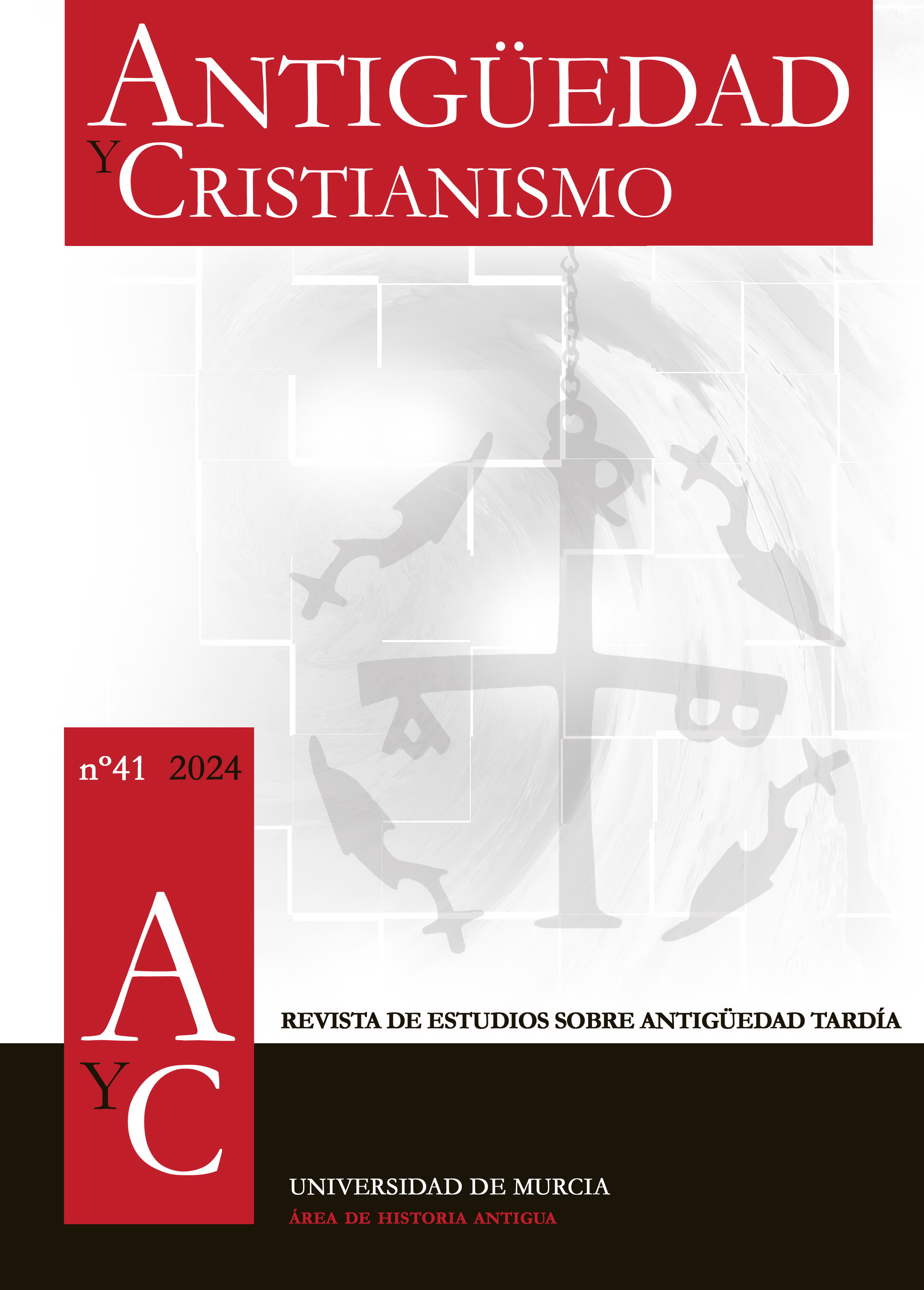
No. 41 (2024)
- Los gasánidas en tiempos de la peste: de aliados militares a gloriosos patricios defensores del monofisismo
- Las villae con fase tardorromana. Análisis comparativo en el espacio pirenaico
- Reexcavar en los archivos. Nuevos datos sobre las intervenciones arqueológicas en la necrópolis del Gallo de Carteia (San Roque, Cádiz)
- Temporalidades descritas: lo cotidiano, del laico al liturgico, en la Antigüedad Tardía (siglos IV - VII)
- Recepción de Heracles y de la mitología griega en la hagiografía de San Antonio
- En busca de la visibilidad social en la Corduba romana: Identidad y promoción social de Publicius Valerius Fortunatus
- Influencias bizantinas en la moneda y política monetaria visigoda -
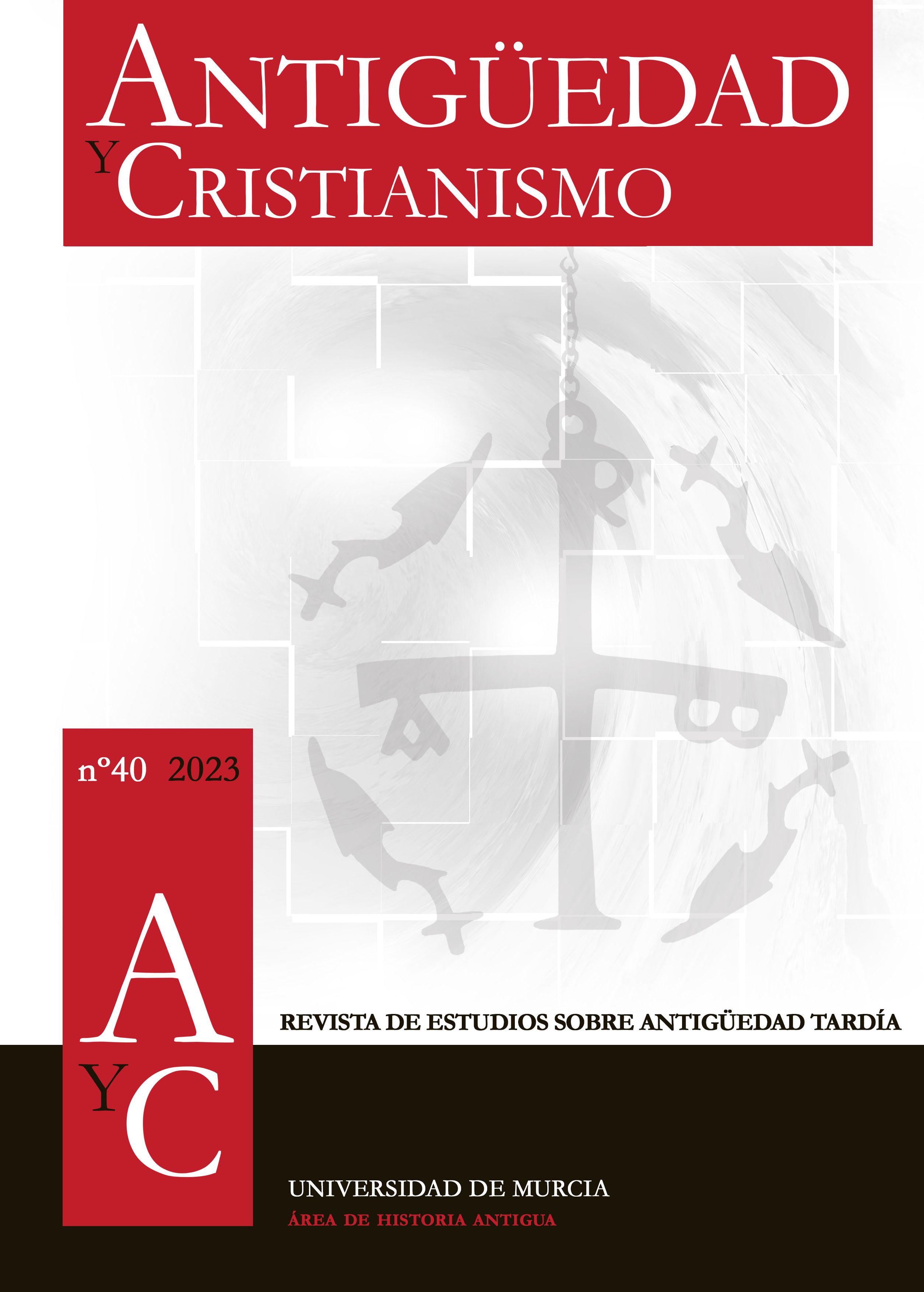
No. 40 (2023)
- La política entrelíneas: la traición, el exilio y el confinamiento en el Ordo Querimoniae 17-23 de Valerio del Bierzo.
- Dinámicas y categorías de poder en la caída del reino suevo. Reyes y tiranos en la Gallaecia del s. VI d. C.
- Princeps salutaris y saluberrima lex: el lenguaje de la salud y la defensa de legitimidad en el discurso político del poder tardoimperial
- Orientación cardinal y disposición ritual en las iglesias hispánicas tardoantiguas (siglos IV-VIII): nuevas reflexiones a partir de algunos ejemplos del noreste peninsular
- Los terapeutas y los esenios: dos comunidades ascético-filosoficas judías de la antigüedad
- La Tarraconensis tardoantigua a partir de las fuentes escritas
- La figura de Juan el Bautista en la exégesis de Ambrosio de Milán
- Un tesorillo de bronces bajoimperiales de la Ciutadella de Roses fechado en el siglo VI.
- Fuente de la Loma, un destacado asentamiento ibero-romano de larga perduración en Cañada de la Cruz (Moratalla, Murcia)
- O manual militar como artefato cultural: Vegécio e a ordenação do passado romano no Compêndio da arte militar (século IV d. C.) -
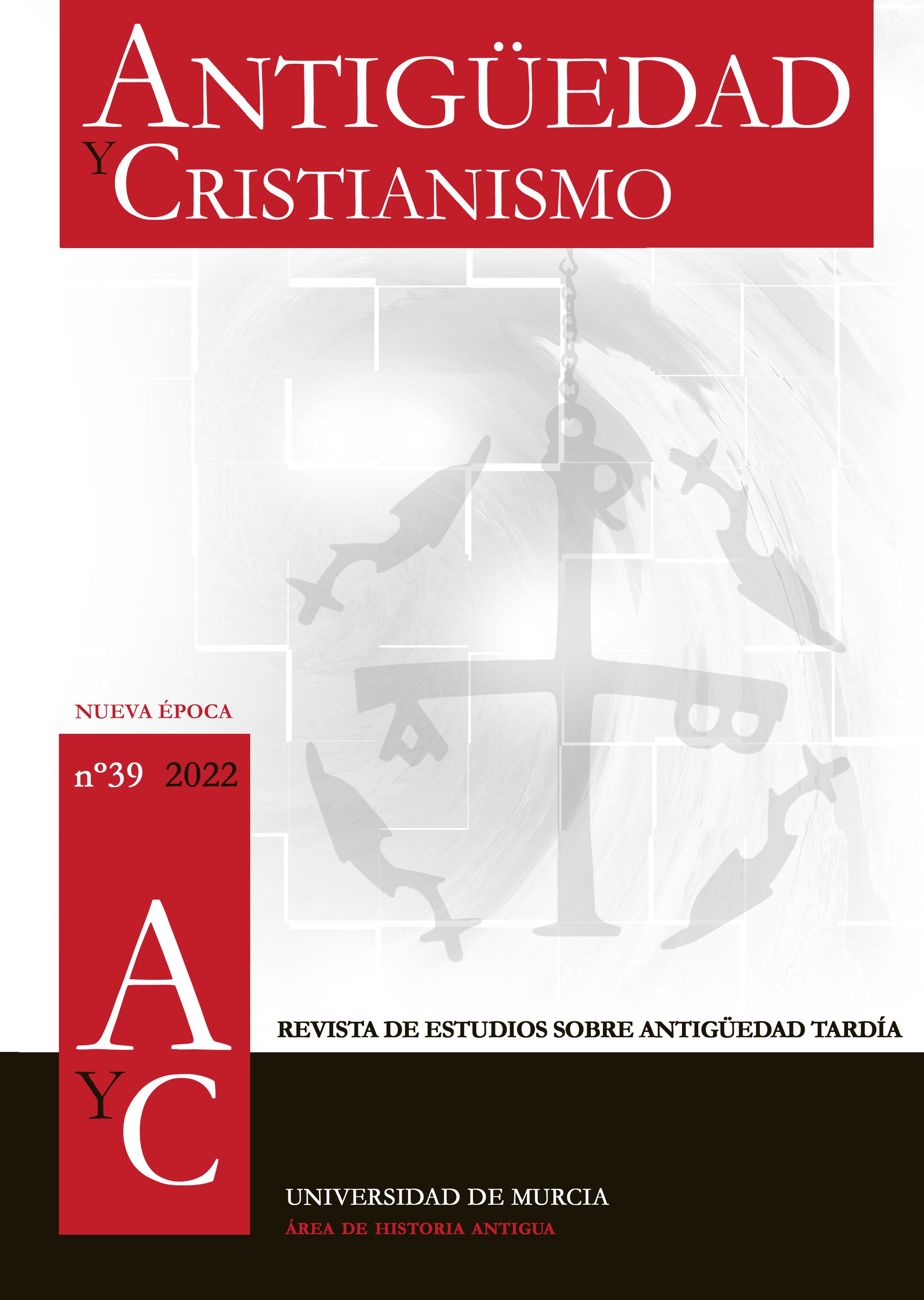
No. 39 (2022)
- Filón de Alejandría y la comunidad terapéutica del lago Mareótide
- Un análisis sobre la dimensión ética y soteriológica de la pobreza y la riqueza en la obra de Hilario de Poitiers
- De cuerpos militares de élite a tropas de ornamentación ceremonial. Una aproximación crítica a las Scholae Palatinae
- ¿Convención u originalidad?: Los atributos de niños cristianos en epigrafía latina
- Los procesos de monumentalización de los enclaves rurales romanos en el Ebro Medio. Estudio de casos entre los siglos III y VI
- Libanio y la autobiografía del dolor crónico
- Simpulum metálico tardoantiguo con mango inscrito del museo histórico de Baena: nuevo testimonio arqueológico del cristianismo en la campiña cordobesa
- Pteryges da parata altomedievali dalla Sardegna
- Una inscripción tardorromana reencontrada procedente de Tarragona (CIL II2/14.2, 934) -
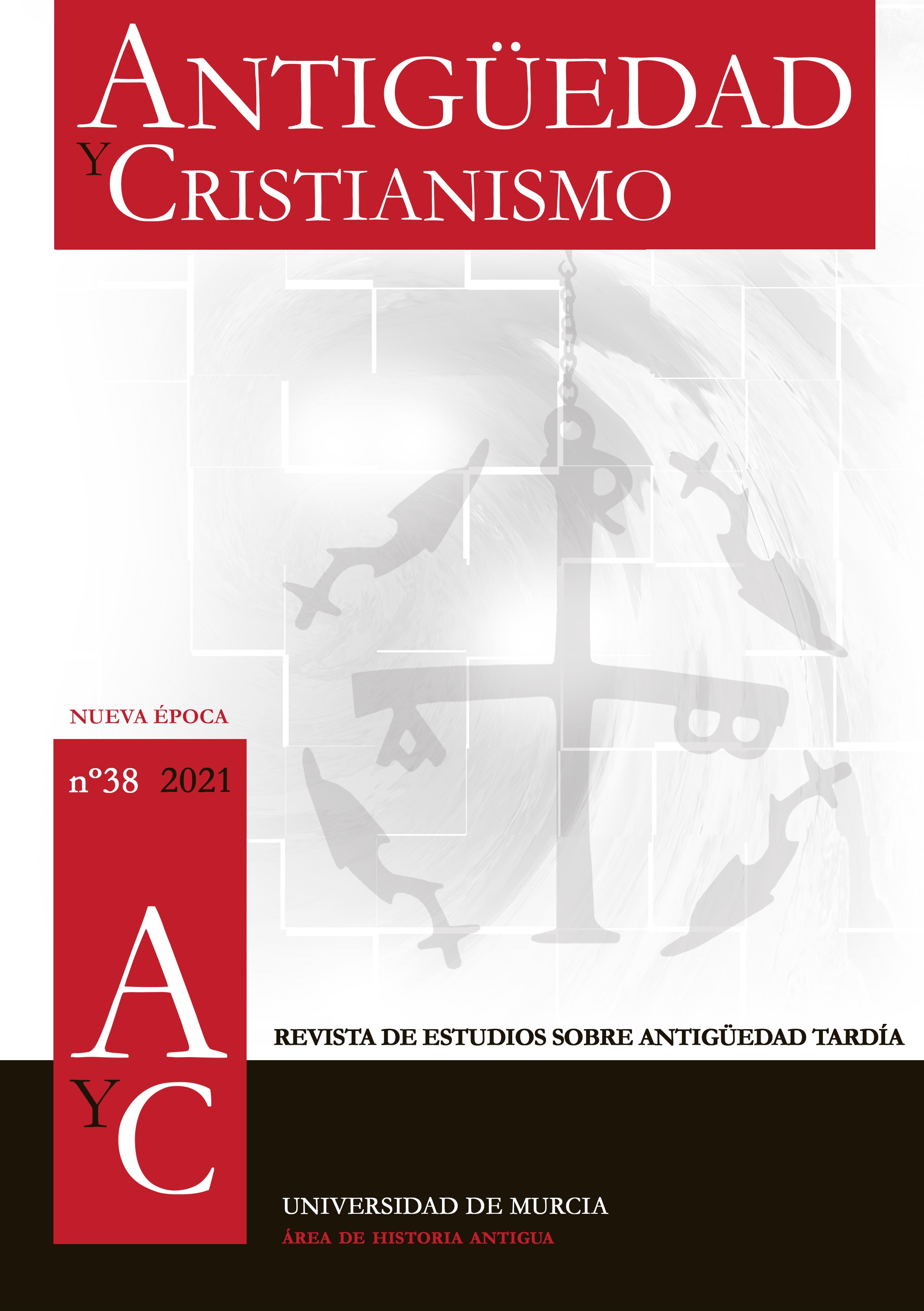
No. 38 (2021)
- El empleo del vocablo phantasma en las fuentes literarias latinas: de los primeros registros a los autores cristianos tardorromanos
- Problemática de estudio en el caso de los retratos de El- Fayum
- Díon en época cristiana. Pervivencias y cambios
- La importancia política y militar de las revueltas bagaudas en época tardorromana
- Algunas imágenes del ejército romano en el siglo III (235-284)
- El rescriptum del emperador Majencio sobre Lucilla de Cartago en vísperas del cisma donatista
- Los ciervos, los cantaros y los cuatro rios del paraiso en los mosaicos cristianos de Tunez. Los catecumenos y el bautismo, los fieles y la eucaristia: un complemento a la iconografia paleocristiana de Occidente
- Episcopus sine ciuitate? La promoción episcopal de centros no urbanos en la Península Ibérica durante la Antigüedad Tardía
- El narrador del Carmen Paschale en el relato de la muerte y resurrección de Jesús.
- Cruces grabadas en la necrópolis rupestre tardoantigua de Tiermes (Montejo de Tiermes, Soria)
- Armonización de calendarios en el mundo islámico primitivo como se refleja en Elementos de astronomía de al-Farghānī -
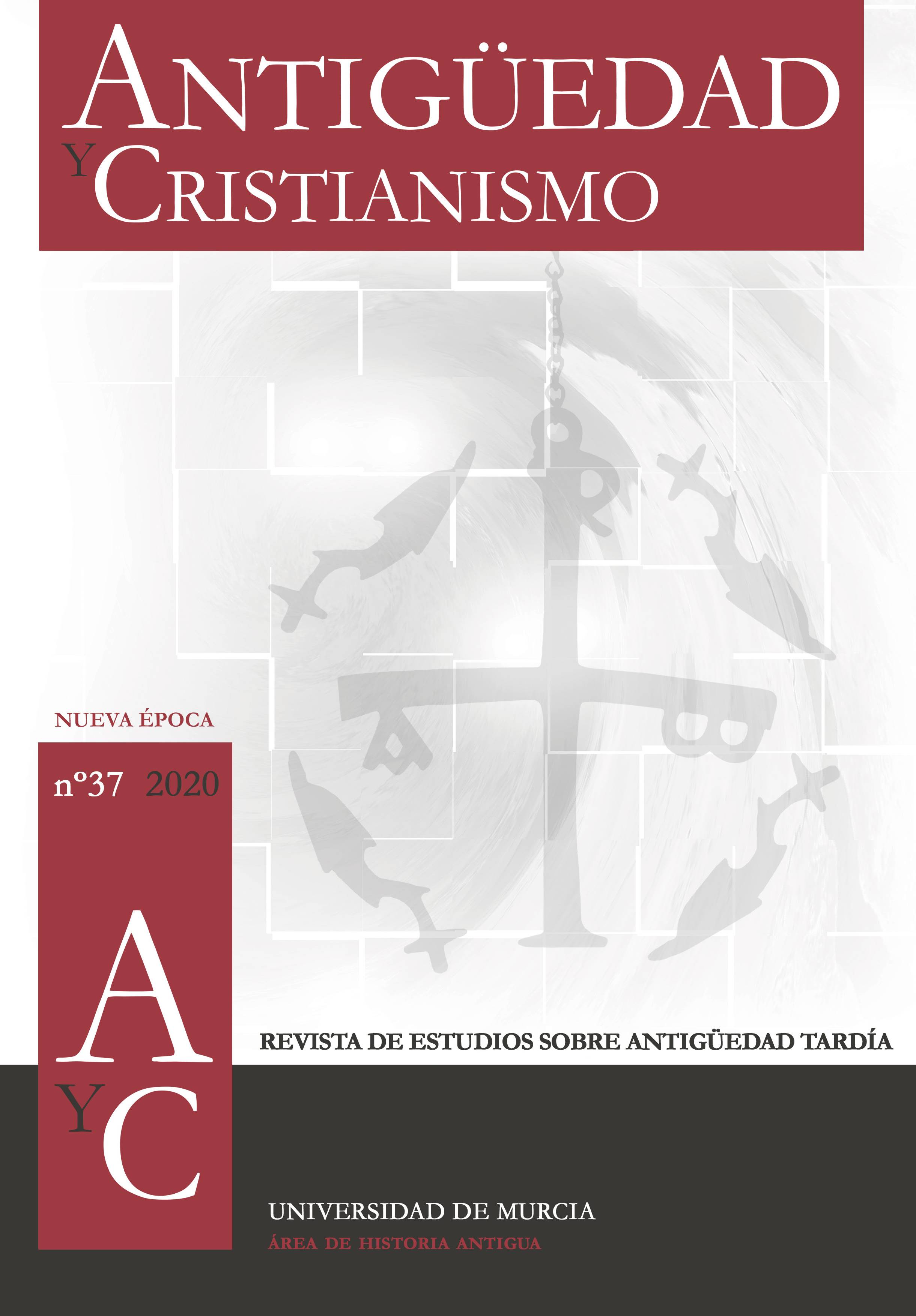
No. 37 (2020)
- De la Tardoantigüedad al Medievo: un enfoque crítico acerca de los estudios arqueológicos en la ciudad de Saguntum y su territorio en época visigoda
- Signum/sigillum eucarístico de la ecclesia visigoda Santa María de Elo (El Monastil, Elda)
- Los mártires de Libisosa: origen, transformación y pervivencia de una tradición hagiográfica
- Historia y arqueología de dos ciudades en los siglos VI-VIII d.C. Valentia y Valencia la Vella
- Constancio II y los cultos tradicionales romanos
- El ‘relato maravilloso’ como expresión mítica de la presencia o ausencia divina
- Avita. Nuevo anillo visigodo de oro -
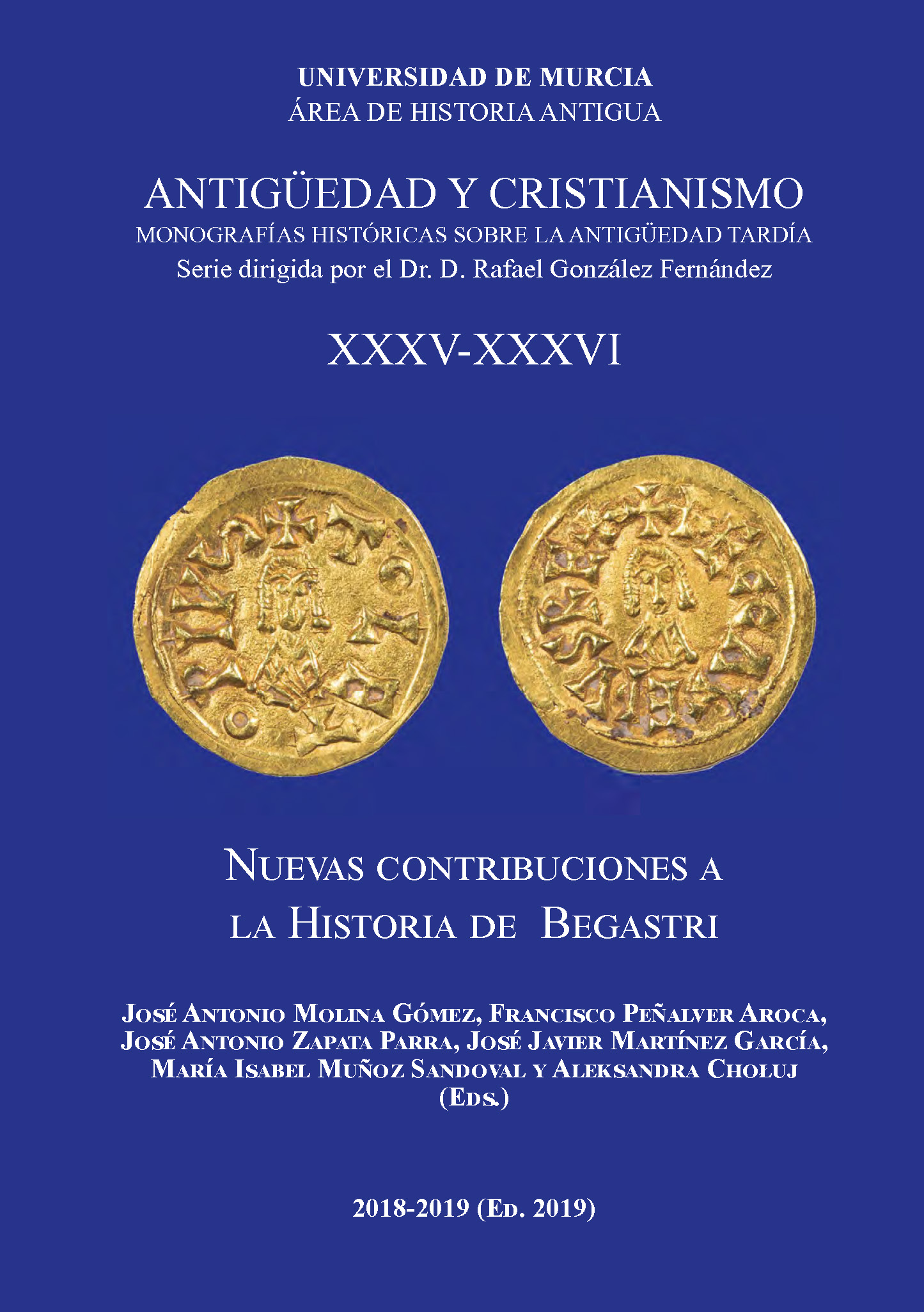
Nuevas Contribuciones a la Historia de Begastri
No. 35-36 (2019)In the hands of the reader is this last decade of studies on the late Roman city and Visigoth episcopate of Begastri. Possibly these are not the spectacular discoveries that jump first to social networks and then to the media already considered archaic such as the written press and scientific literature, but they are certainly new revealing data for the knowledge of a dark period in the past. peninsular southeast and that will allow to have a better, clearer and more exact image of the Region of Murcia in the period that goes from the end of the Roman Empire to the Arab conquest.
-
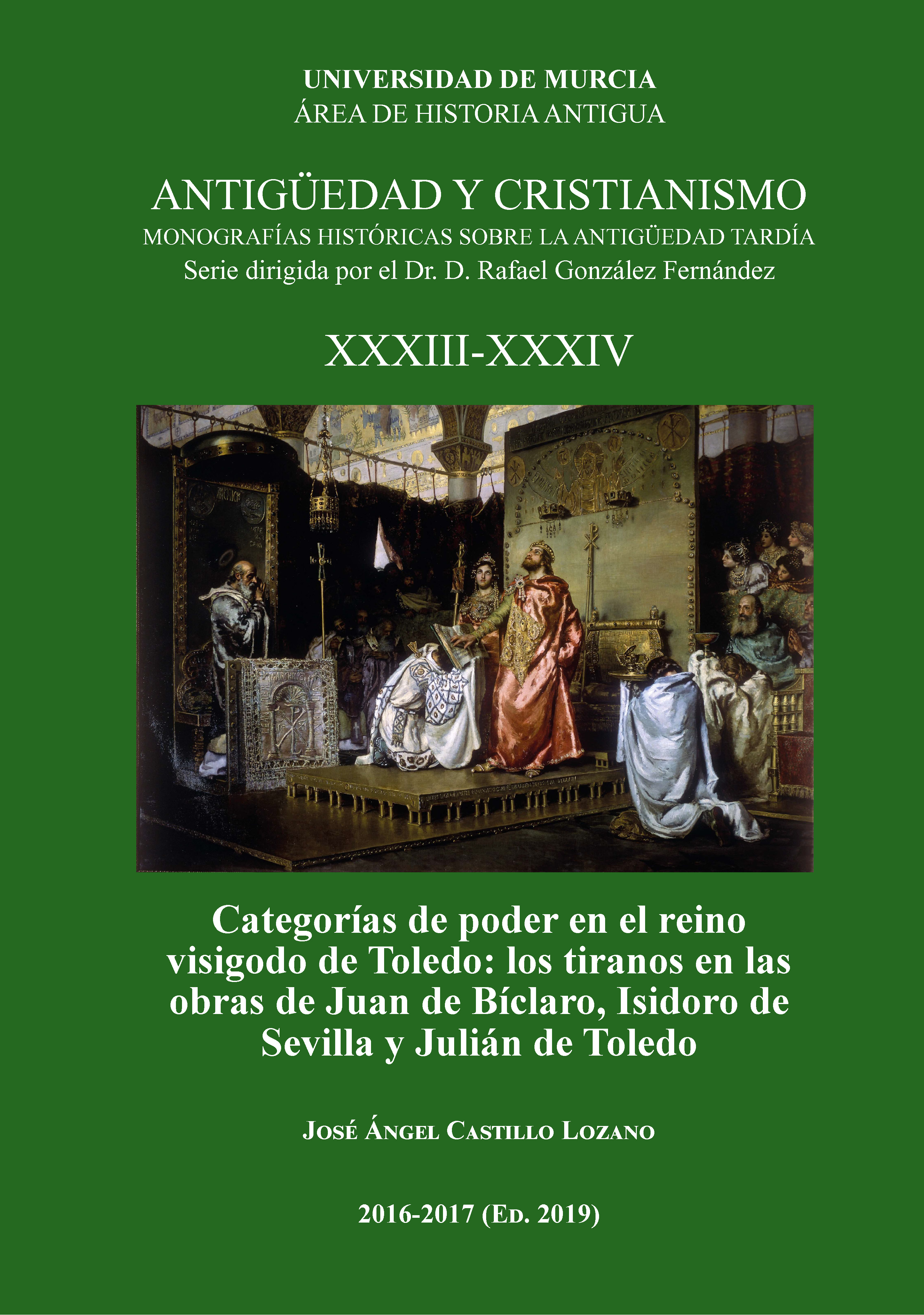
Categories of power in the Visigothic kingdom of Toledo: tyrants in the works of Juan de Bíclaro, Isidoro de Sevilla and Julián de Toledo
No. 33-34 (2017)A historical question of the utmost importance and seriousness consists in establishing the degree of individual responsibility in the march of important life events, but also the degree of implication and relevance that a person as a particular individual has in the evolution of History. . It is true that it is set in motion on a large anonymous mass that only now in relatively recent times we begin to know. Until not too long ago, general concepts such as mentality or microhistory came to try to alleviate that emptiness of people without History, an emptiness that B. Brecht so eloquently interrogates us in some famous verses that make it difficult for us to know much about walls and cities and little on those who raised them.
-
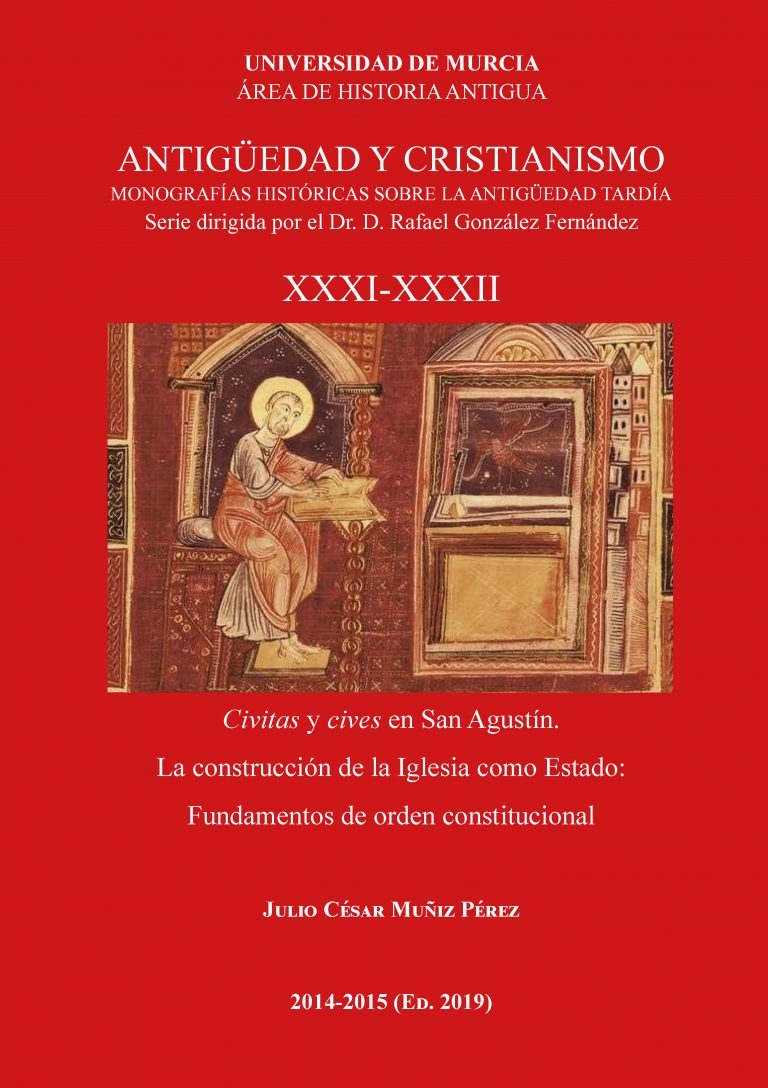
Civitas and cives in San Agustín. The construction of the Church as a State: Foundations of constitutional order
No. 31-32 (2015)In the next lines we come to extract an analysis that fundamentally starts from a conceptual history methodology that implies, as Koselleck (1983, 15) pointed out, the study of the formation of concepts, their use and their changes. We are, therefore, in the field of conceptual history or Begriff sgeschicte, which involves facing the genesis and conceptual logic to analyze changes in ideas and value systems. Placing ourselves chronologically in the late empire, this methodology seems particularly useful to face the multiple mutations that occur in the period. In our case we limit ourselves to the conceptual delimitation of the use of certain concepts considered key in Saint Augustine, justified both in the later importance of the Saint and by his systematic and neat character in the use of language. However, we must point out that we are aware of the main criticism attributed to conceptual history, that is, the difficult comparison of modern concepts (as is the case of the concept of the State, whose birth we find with Machiavelli in the 16th century) to realities. very diverse concepts. However, we maintain that such a comparison is possible, obviously mutatis mutandis, although its specific foundation would require other monographic research on the subject. Let's say that when Augustine uses one term and not another, he does so with full awareness of it.
-
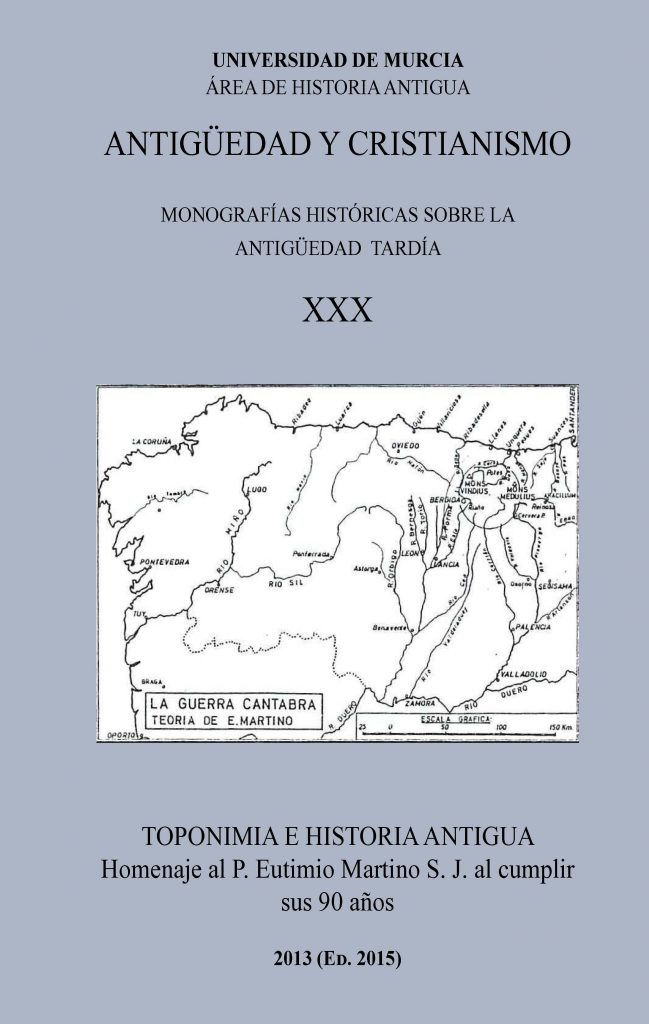
Toponymy and Ancient History. tribute to Fr. Eutimio Martino S. J. on his 90th birthday
No. 30 (2013)Eutimio Martino has always been a man who allowed himself to be owned by his work. In his time as a teacher of Humanities, the students said of him that he taught by infecting and, in effect: He has been one of the few teachers who have created a magazine to make students have a means of expression and begin to learn by walking, practicing. It was the journal Cuaderno de Humanidades. Fr. Martino is a pure scientist and, as such, neither he believes himself infallible nor do we think so. His theories are as debatable as many others currently on the table. The only thing we want is to highlight them, insert them into national and international discussion, make them known to the field of science so that they are discussed. We believe that they are very worthy of such consideration, that not only do they not detract from others that are studied with great respect today, but we affirm that their results are more plausible than many of the others, and in any case, that they are proposals that can advance The science.
-
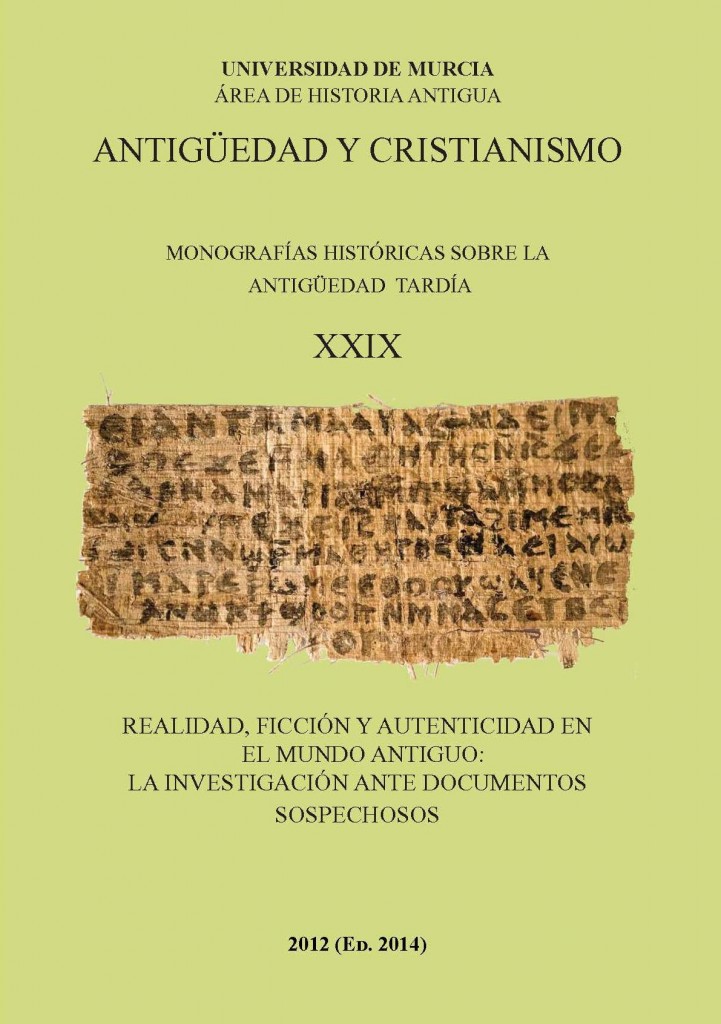
Reality, Fiction, and Authenticity in the Ancient World: Investigating Suspicious Documents
No. 29 (2012)In the framework of the interdisciplinary activities of two research groups from the Complutense University of Madrid and the University of Oviedo, which collaborate in various cross-cutting areas of their respective fields of work, we propose a common work, in connection with various research projects and finally this book was the result of discussions and debates raised between the editors and the authors themselves - members of the respective teams in some cases and researchers from other universities outside of Spain. Within the institutional framework, this book is attached to the Projects Research: FFI2013-41170-P and FFI2012-34719 of the Ministry of Economy and Competitiveness, as well as of FFI2009-09465 of the Ministry of Science and Innovation and S-2007-HUM0543, Network Project of the IV PRICYT of the Community of Madrid, and for its preparation, it has received aid from the Government of the Principality of Asturias through the Science, Technology and Innovation Plan n of Asturias (FICYT).
-
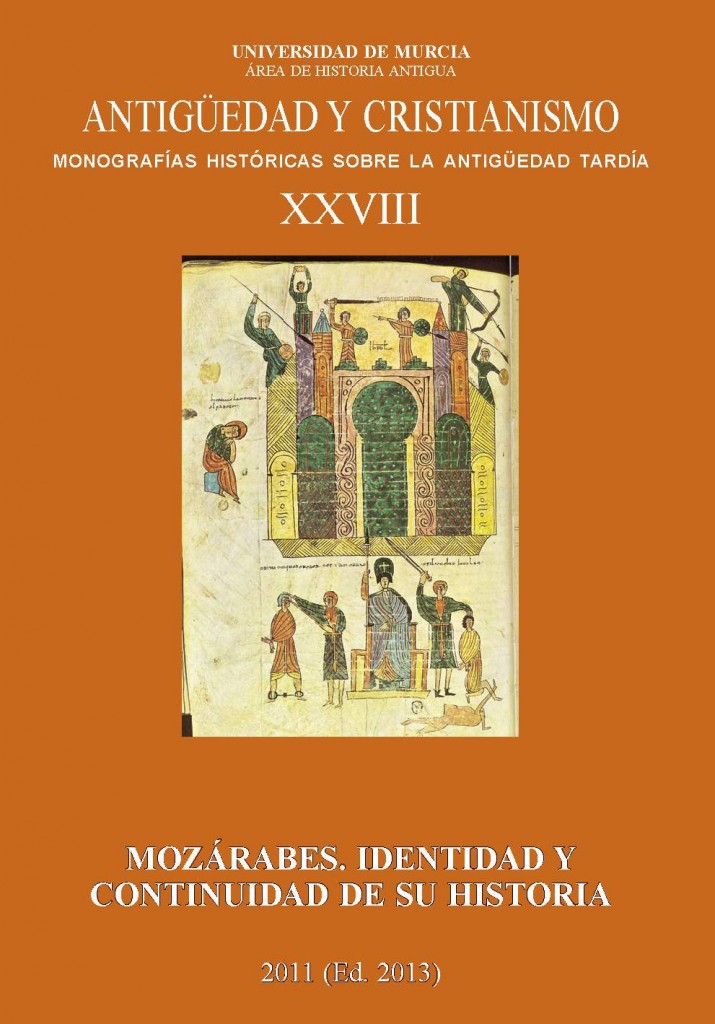
Mozarabic. Identity and continuity of its history
No. 28 (2011)The topic of the "Mozarabs" is always very important, but the degree of it changes according to the perspective from which it is approached. Here we approach it without much pretense. We offer the works that were read in a conference held in Murcia in 2005, but we want to highlight in this presentation, the interest that the topic acquires if viewed from the perspective of "continuity in history", since we are doing well sure that in the Iberian Peninsula there were Mozarabs always and in all their lands, until the final year of 1492, date from which the problem will be the "Moors" who inherit the same problem since, at least many of them, they are catholic.
-
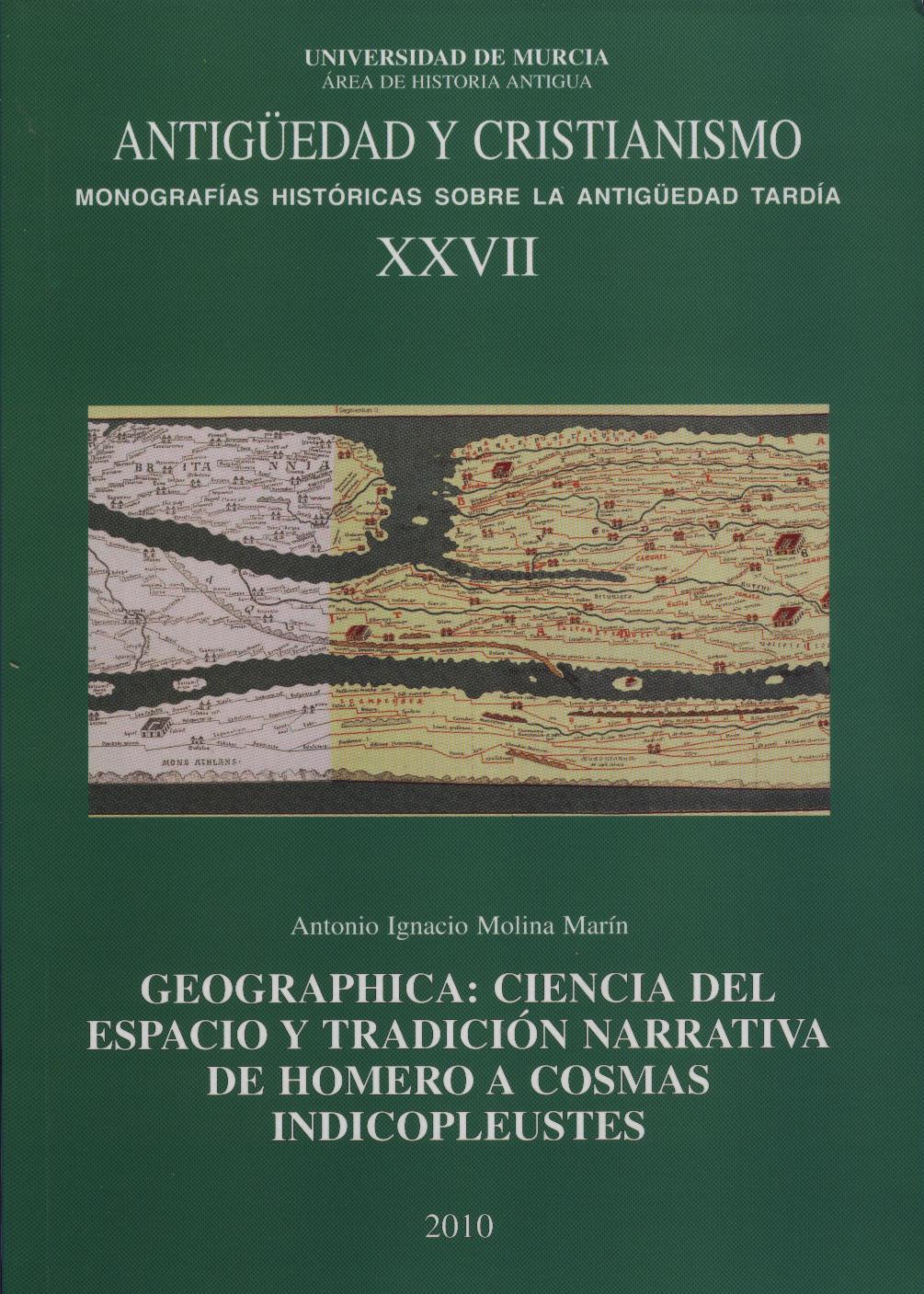
Geographica: science of space and narrative tradition from Homer to Cosmas Indicopleustes
No. 27 (2010)The volume you have in your hands, reader friend, is a work of maturity. Its author, a young man, but hard-hitting in his research, carried out a splendid undergraduate thesis on La paideia de Alejandro. He then obtained his doctorate with other research on Alejandro's Losgeographers. It was then, when within the approaches of the Ancient History area of the University of Murcia, in which the subject of historical geography was cultivated with special interest, we proposed the idea of taking advantage of his extensive knowledge and small experience to compose a book on Geography of antiquity. And after several years of work here we have the result.
-
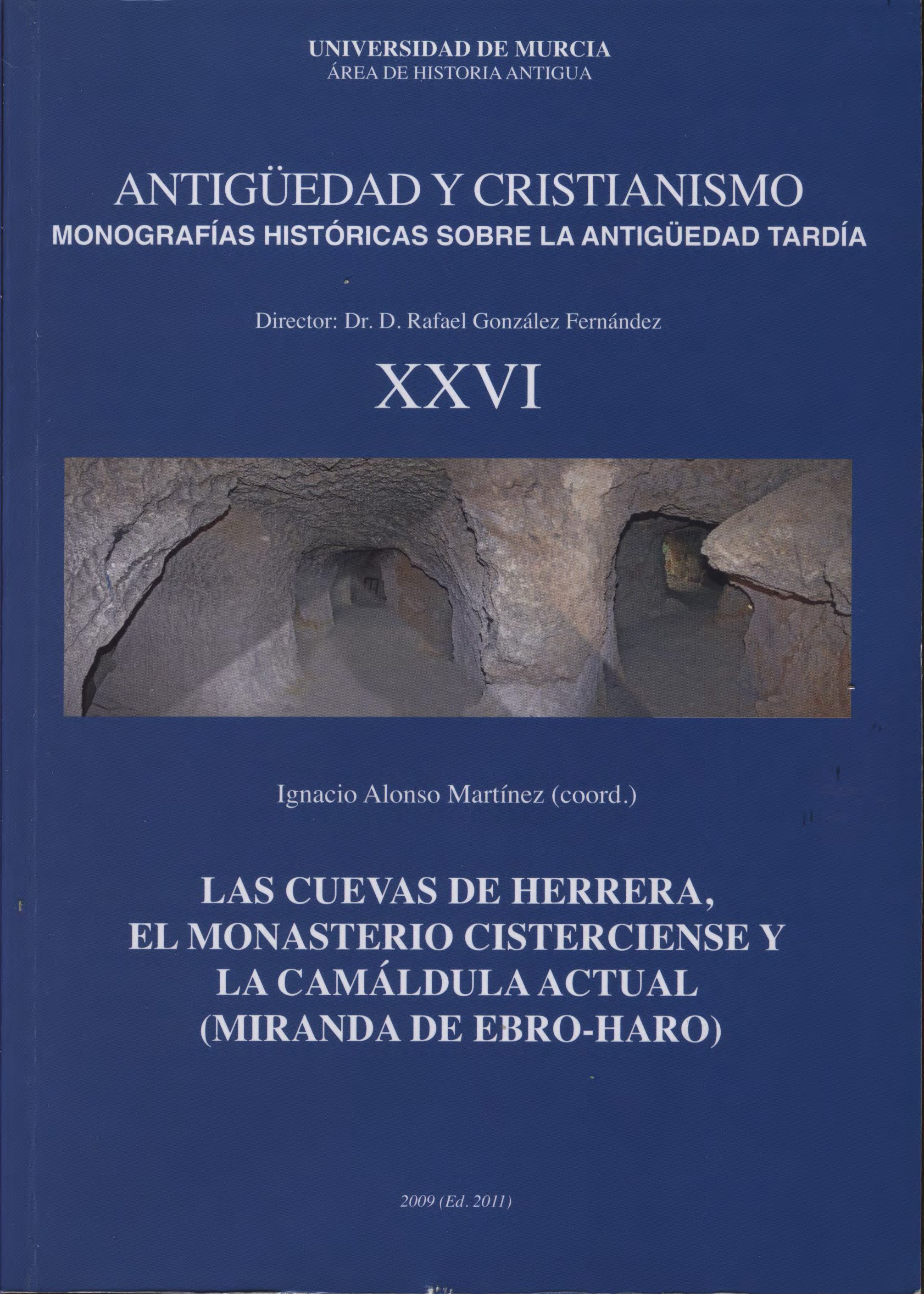
The Herrera caves, the Cistercian monastery and the current cavaldula (Mirand de Ebro - Haro)
No. 26 (2009)For a quarter of a century, an eclipsed tradition has been recovering, but never completely forgotten, the awareness that throughout our history caves and solitudes had been, on many occasions, inhabited by "men of God". The fact is documented in cases such as San Millán de la Cogolla, whose life speaks clearly about it and in others such as the San Martín de Albelda monastery, which never lost the cave image that is still well visible in the place today. The rest of the places with caves had been blurred until slowly the cave of the "Patio de los Curas" by Arnedo with epigraphy of the 5th century, which without any hesitation has been identified as a church, then with consciousness Attentive, the rock monastery of San Miguel de Arnedo; as well as the rock complexes of the upper Ebro, the surroundings of Treviño County and other points of the Basque provinces4. Scholars have realized that San Tirso de Arnedillo is a hermitage in a cave, so that when the indications are clear, and in many cases they are, it is not disputed that those caves that have them have been headquarters of monastic houses.
-
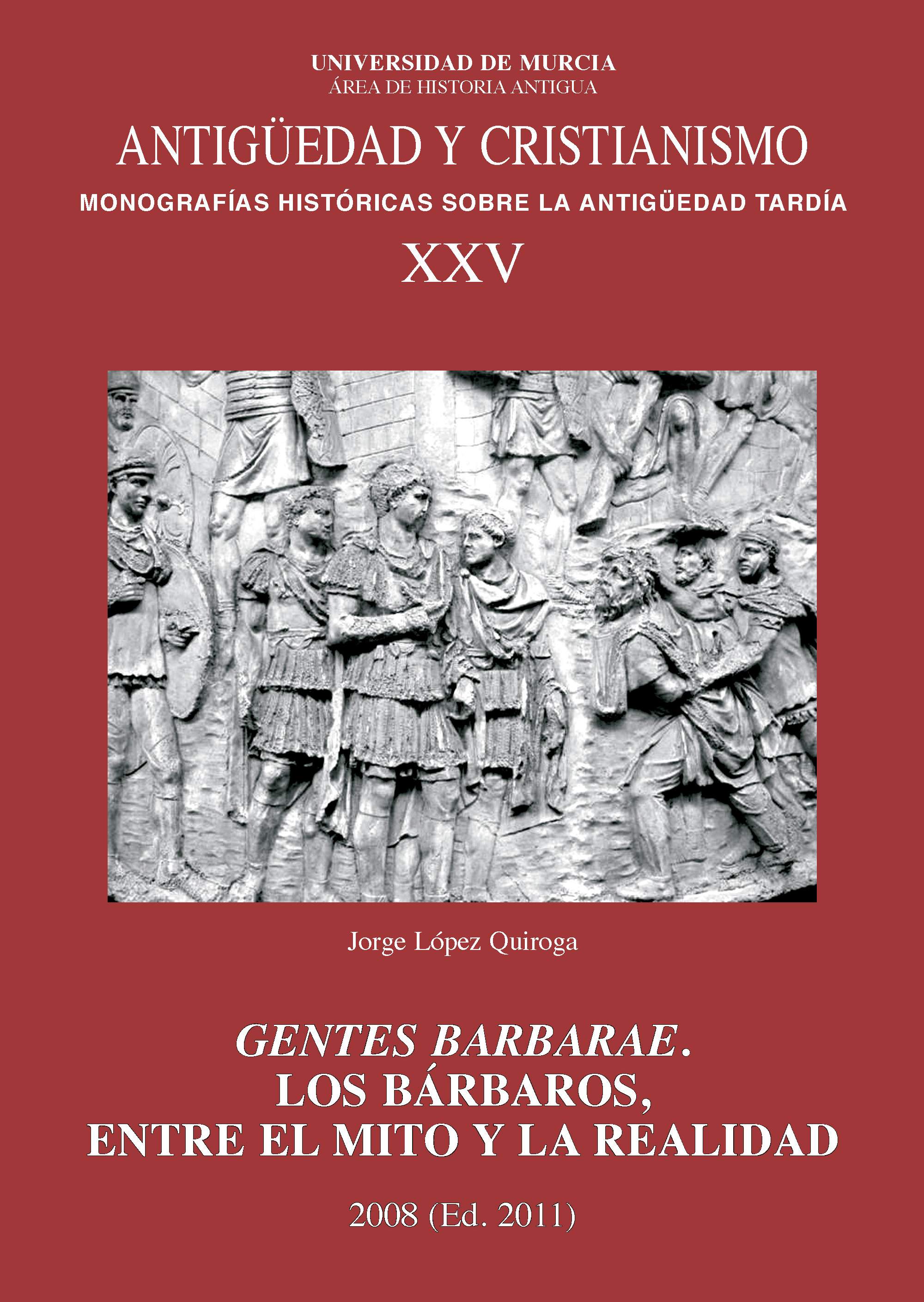
Barbarae people. The barbarians between myth and reality
No. 25 (2008)Europe has largely been spared in the last 50 years of wars. And yet, our time is lived as a crisis. This is not so much due to climate change, which in fact most people hide, but rather to migration from Islamic countries, thus giving rise to many small and large conflicts in all areas of society. In daily life this is reflected in the different conceptions of the family, the roles of men and women and, less frequently, in the separation between Church and State. In some regions, and particularly in the large cities, true parallel societies have thus been configured, although still at the socially lower levels, which do not even master the language in common use. It is therefore not surprising that there is now a discussion throughout Europe about how immigrants can be integrated, how to get them to accept local social norms and how to get them to identify with the host country and its constitutional norms. Meanwhile, newcomers are still connected to their country of origin, so to speak, in the form of a "second" identity .........
-
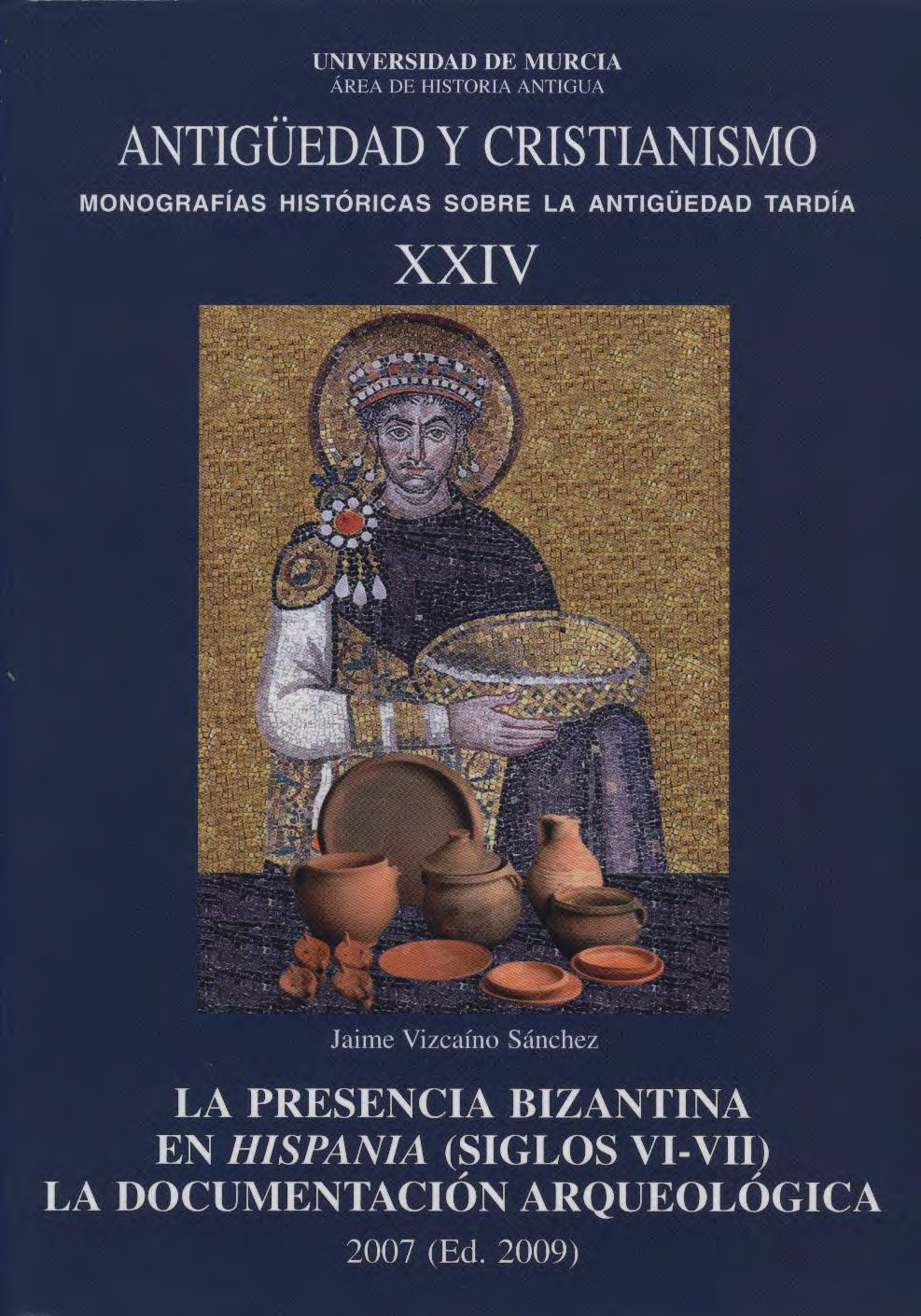
The Byzantine presence in "Hispania" (VI-VII centuries): the archaeological documentation
No. 24 (2007)Since half a century ago, Prof. H. Schlunk proclaimed his admiration for the fact that Byzantine art revealed its reflections in the Iberian Peninsula only in Asturian art, just at the furthest point from where its attested political presence was According to the sources, the investigation has been waiting for such an admirable appearance to be nuanced and clarified since it was not easy to admit that it was real and worthy of credit and scientific acceptance. Since then many things have happened, which have been opening clouds of a light that was sensed in the distance. First was the discovery of the reality of Late Antiquity in peninsular archeology. Then the reading of the tablet of Comenciolo made us remember that there was Byzantine art documented in the city of Cartagena. Later we ourselves proclaimed that the Byzantine limes could be specified in the castles documented in Puerto de la Cadena, in Alhama, in Puerto Lumbreras and in other places to be specified, but with features that were sufficiently clear and decisive to go. discovering the historical entity of that historical period that had not yet manifested itself in the brightness of its material reality ........
-
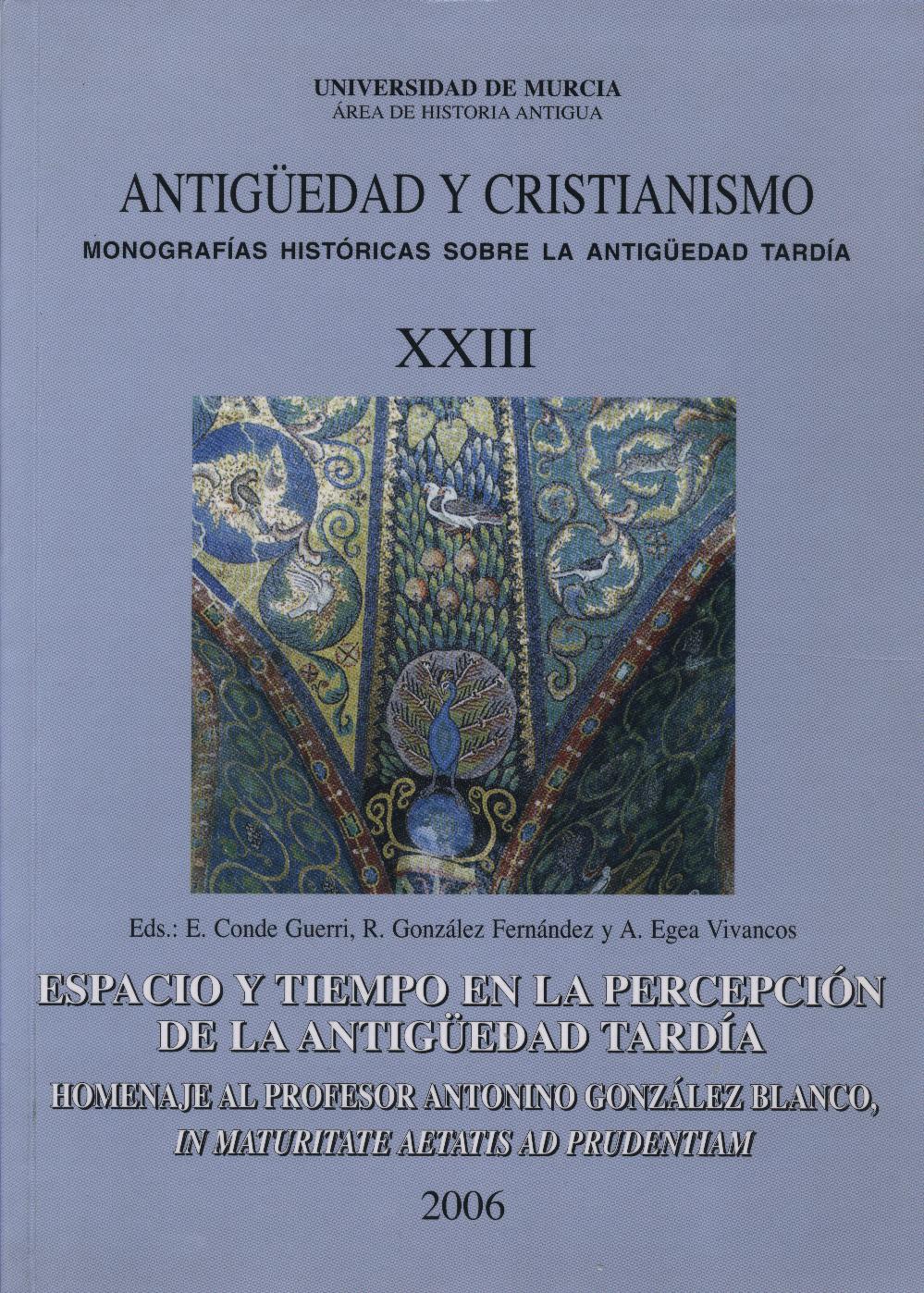
Space and time in the perception of late antiquity: tribute to Professor Antonino González Blanco
No. 23 (2006)Pronouncing a laudatio has both honor and audacity. Honor for being able to raise your voice praising and evoking the figure of someone to whom we all owe something, dared to believe that it can be done well and with justice. Anyone who knows Professor Antonino González Blanco will know that he has been and is a man fully dedicated to his family and his work with all the energy of which he is capable; and who knows him knows that that energy is a lot. His contribution to science has been extraordinarily fruitful, awakening anyone's amazement at an activity in which many lives would fit, because as we all know, the history of antiquity has not been the only field in which Don Antonino has moved, who he has also cultivated anthropology, archeology, toponymy and heraldry, among other sciences ..........
-
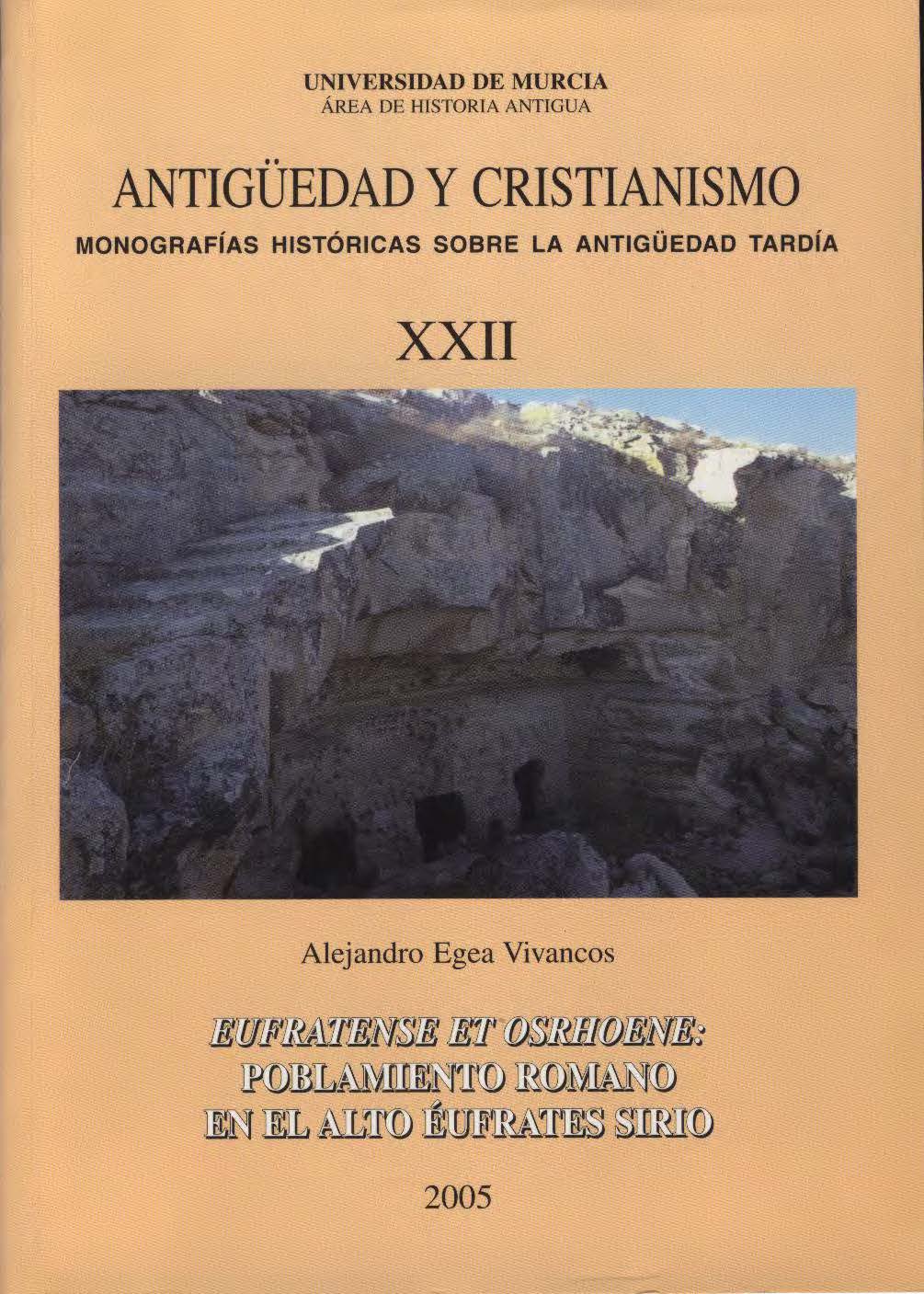
Eufratense et Osrhoene: Roman settlement on the High Syrian Euphrates
No. 22 (2005)The origin of this publication must be sought in 1989. Since that date, among the tasks carried out by the Spanish Archaeological Mission in Syria was an ambitious program of prospecting and study of the territory, in which the sites where it was being excavated were framed. (Tell Qara Qüzaq and Tell Jamís). This company not only covered a wide area of telTeno but also an extensive chronological framework.As a result of this initial line of research, direct and more intensive field work was undertaken around all the remains of Roman and Byzantine times that had been discovered. located in the continuous excavations and prospecting in Syria of the lnstitute of the Ancient Near East.
-
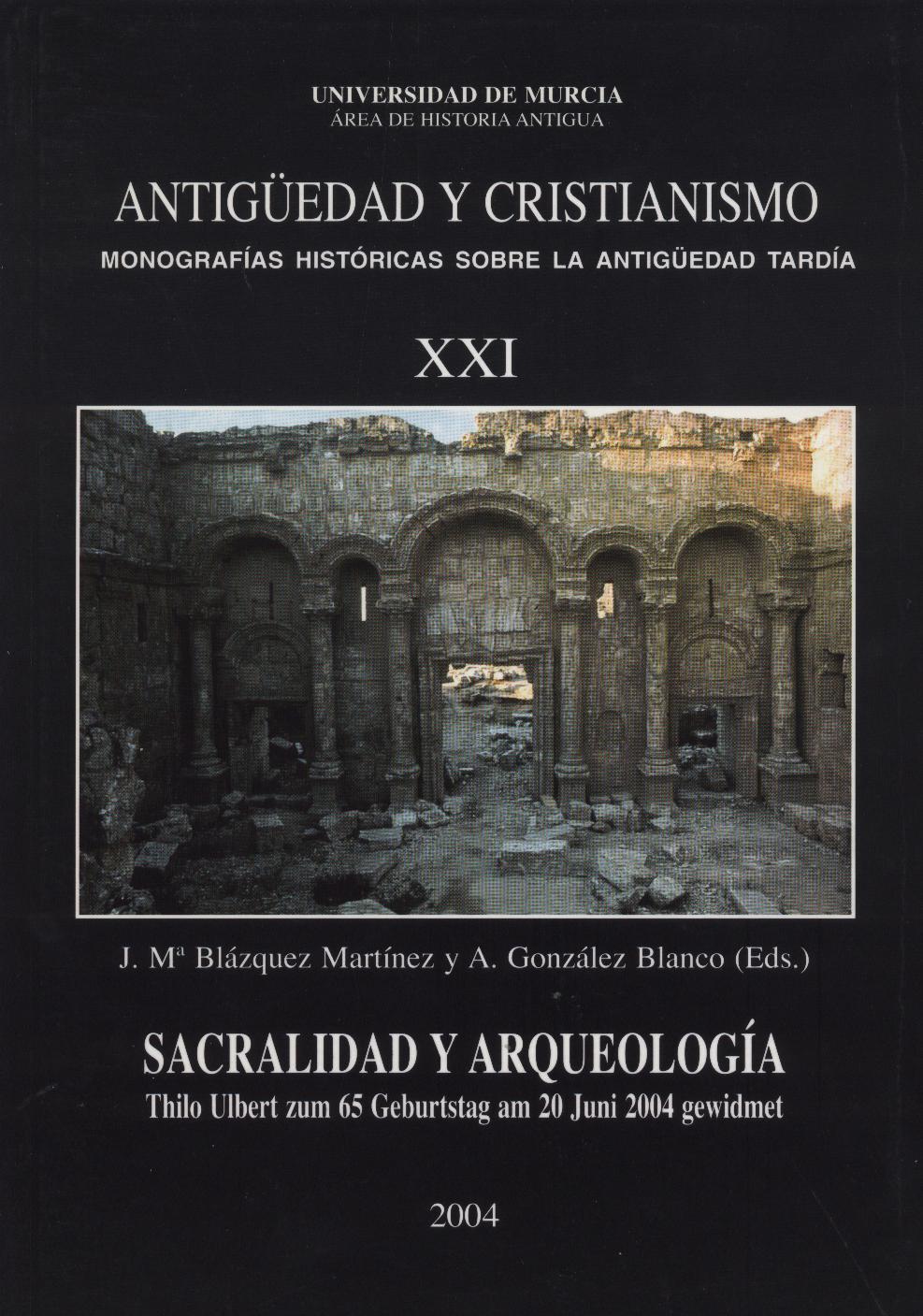
Sacrality and archeology: tribute to Professor Thilo Ulbert
No. 21 (2004)For Antiquity and Christianity it is a high honor to dedicate a volume of tribute to ThiloUlbert, on his 65th birthday, in applause and proclaiming exaltation of his investigative work. This offering is just recognition of a fruitful life that has enriched all of us and that the history of the Late Antiquity has led it along paths of light and intelligence. Her work, in Spain and throughout the Mediterranean, constitutes a milestone in the study and understanding of our early Christian architecture. In the 19th century, Hübner created the Roman history of Spain, also gathering the inscriptions of Christian Spain; and in the XX Schlunk and Hauschildal they reached summits that have determined the course of the discipline in the field of our bull skin. Ulbert's work has ensured that the scientific awareness of the history of Late Anti-aging in the Peninsula maintains its vigor and wealth without detracting in any way from its very illustrious predecessors. In the face of such effort and scientific quality by the Spanish there is no other position than admiration and gratitude.
-
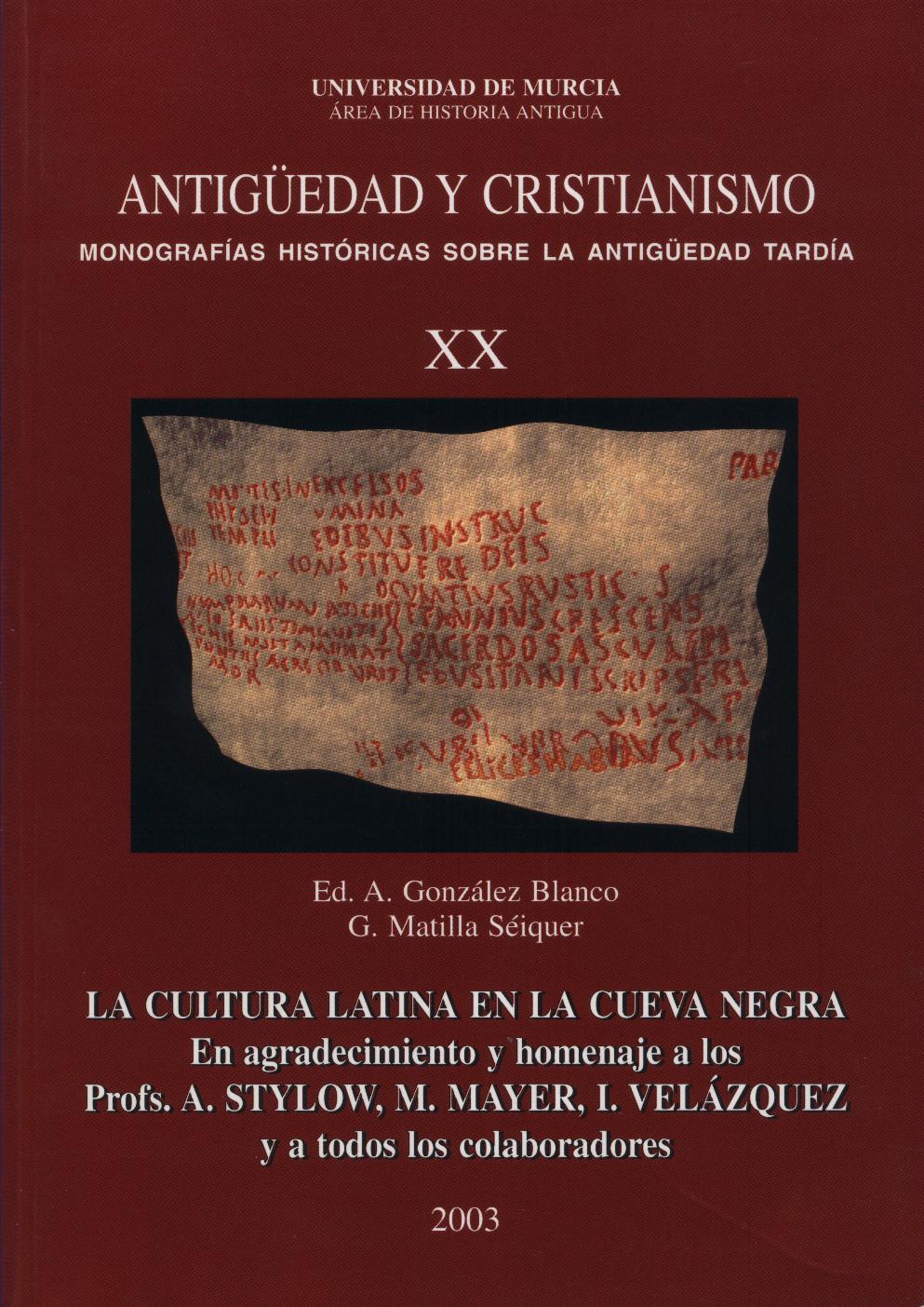
Latin culture in the Cueva Negra
No. 20 (2003)Since the literary content of the Cueva Negra of Fortuna was discovered, it has been a necessity felt by researchers to invite Latinists to join in the study of these texts, from the work of reading and identifying them to no less difficult to interpret. Only very slowly have scholars taken such texts into consideration. Probably because of the novelty of the find, but also, there is no doubt, due to the terrible difficulty of the task. Here is the first reason for the joy that fills us when presenting this book. It includes the reflection of the group present at a congress held in Fortuna, on February 10-13, 2001, attended by 25 people, whose contributions, some direct and others due to influence, are present here.
-
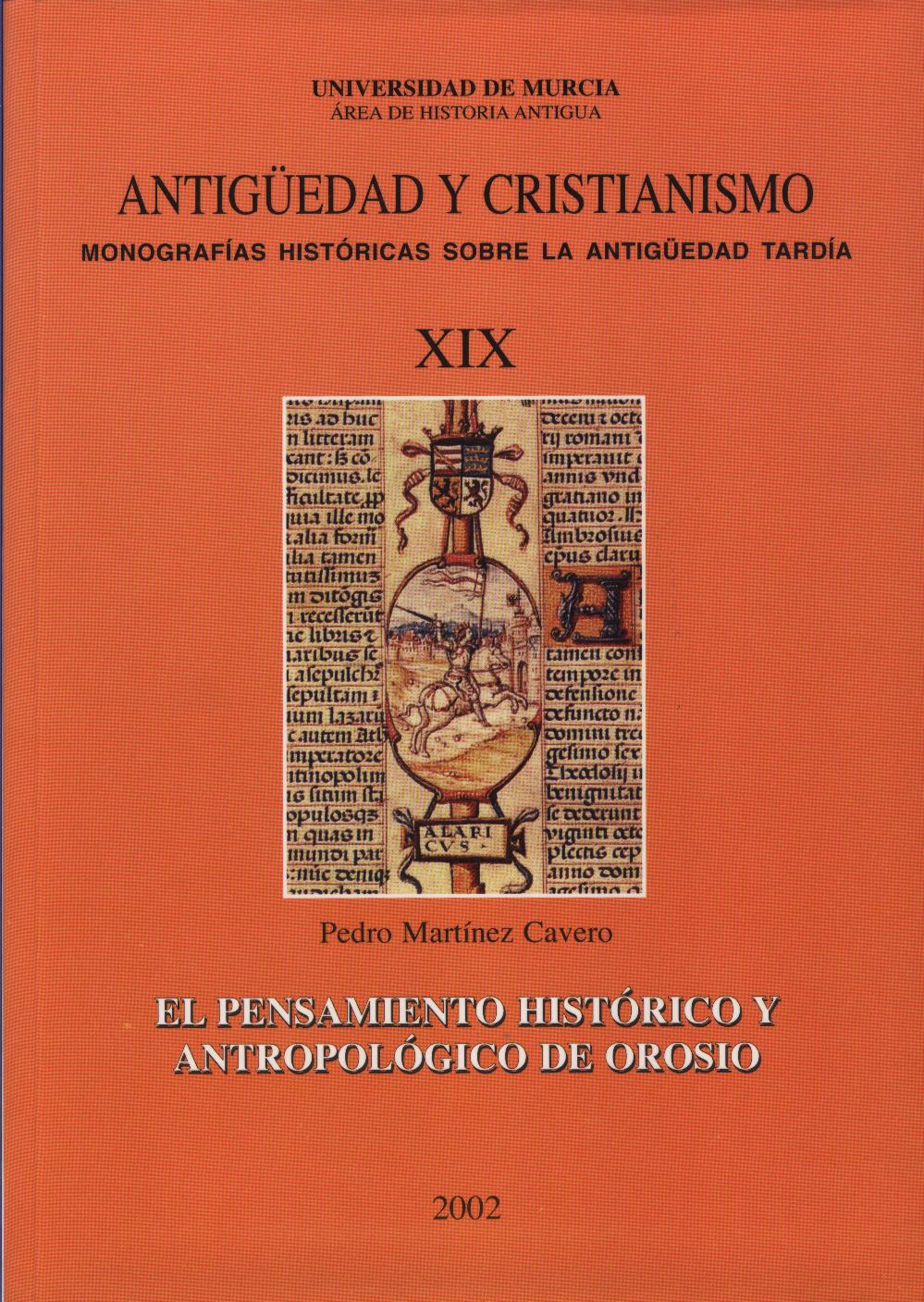
Orosio's historical and anthropological thought
No. 19 (2002)The volume that we present here is the result of a long period of analysis and reflection on the historical-political and anthropological ideology of Orosio, a Hispanic priest who wrote his works in the second decade of the fifth century of our era. The study we have carried out arises from a joint approach to the life and work of the Hispanic writer.As he is known, Orosio is the author of three works: the Commonitorium de errore Priscillianistarum et Origenistarum, the Liber apologeticus against Pelagium and the Historiae adversus paganos.
-
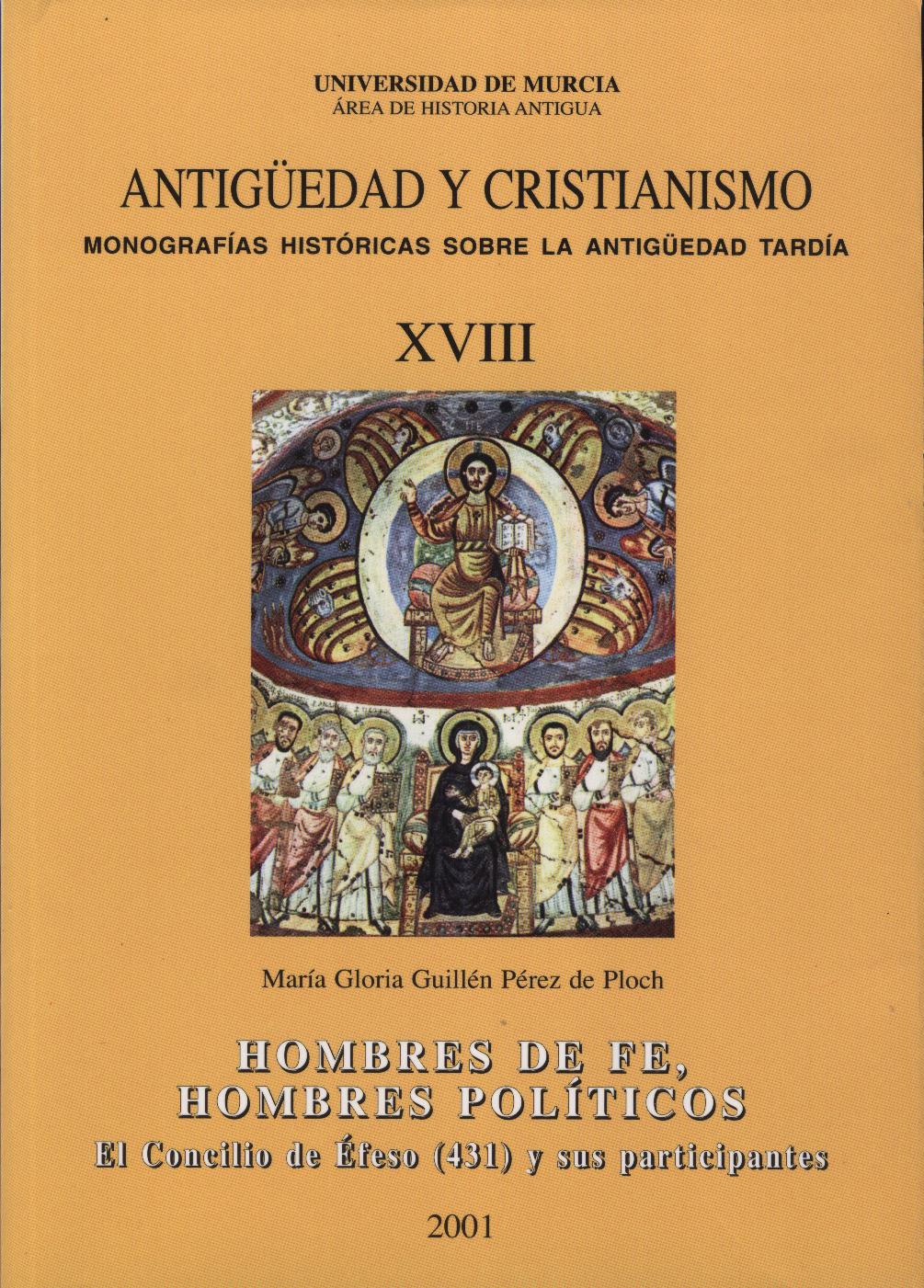
Men of faith, political men: The Council of Ephesus and its participants
No. 18 (2001)History is written on earth and knowing how to read it is the primary task of historians. People play an important role, but they cannot be understood neither in their being nor in their behavior, unless they are contextualized temporarily and locally. The council of Ephesus in 431 has always been considered a problematic moment in the history of Theology, of Canon Law and of the Church in general. And scholars have divided themselves into the reconstruction of what happened there and of the deep forces that during those not-so-easy years moved events.
-
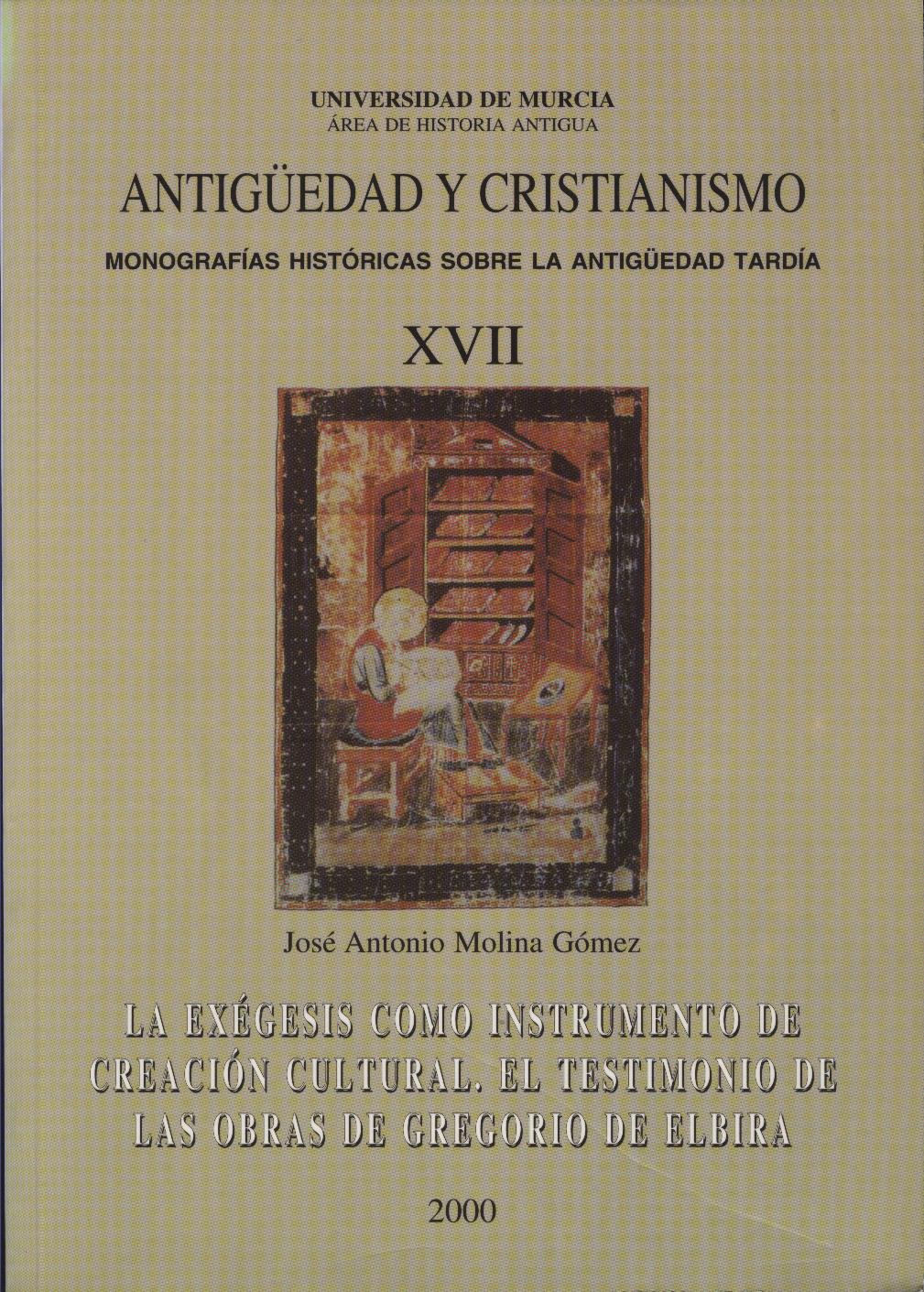
Exegesis as an instrument of cultural creation. The testimony of the works of Gregorio de Elbira
No. 17 (2000)It is a pleasure to present to the scholars of Ancient History a strictly historical, but not usual, subject. The world of hermeneutics, central to the problem of historical understanding, is often avoided and sacrifices itself to the claim of an always problematic "objectivity", especially if it does not attend to the epistemological foundation of our documentation. An effort like the one we are presenting is cause for hope and joy, and we are also facing an enormous historical problem. Indeed, it is well known that writers, including historians, often project the world of their ideas when making the choice of their subjects for study and that the dialectic of thought always departs from the interests and environment of the group, the writer is inserted. It has always been so and will inevitably be so.
-
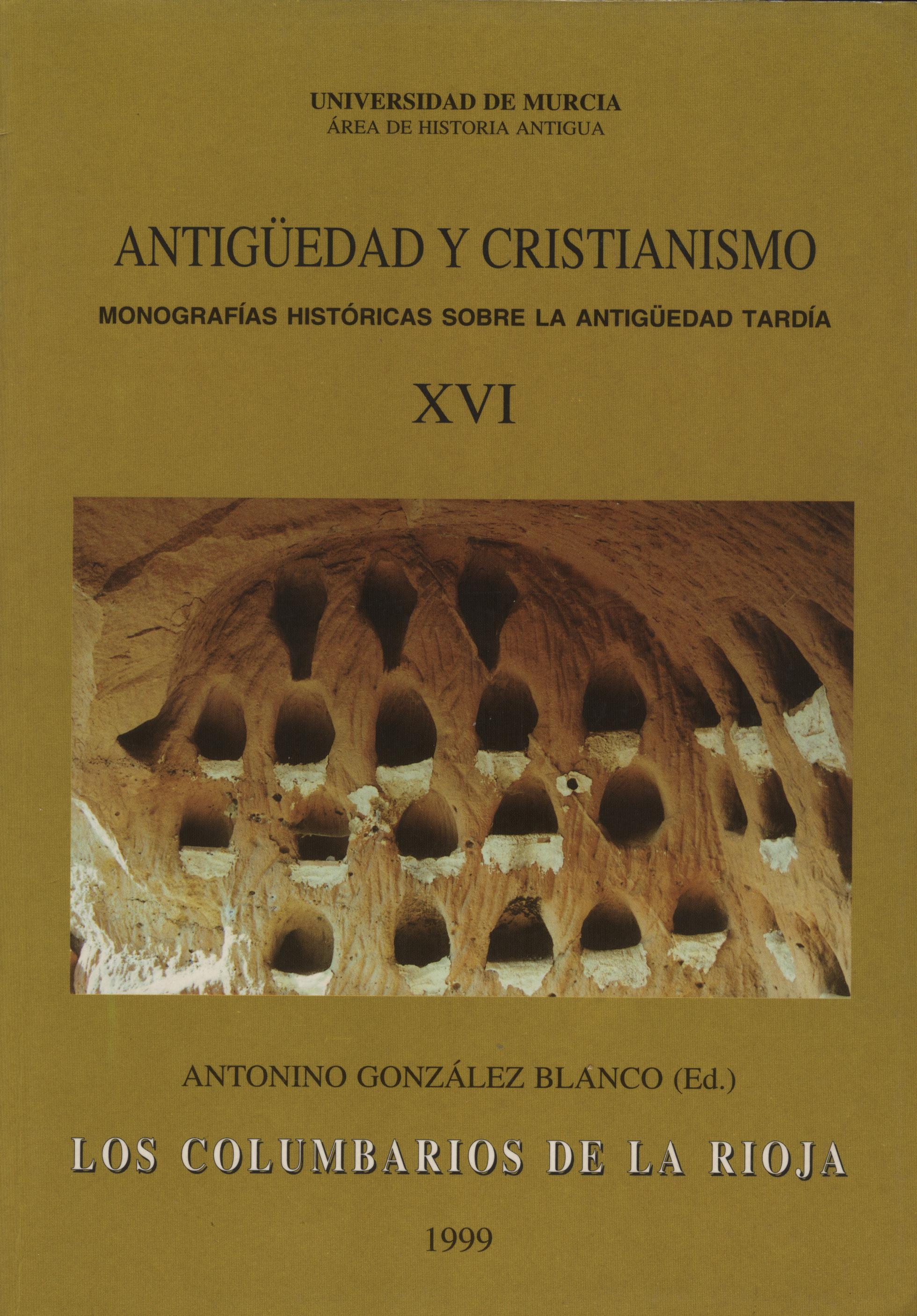
The columbariums of La Rioja
No. 16 (1999)"The history of our ancient monks has not yet been studied with a modern criterion," said Fray Justo Pérez de Urbe1 half a century ago, referring to Hispanic monks1. The eastern monasticism had been luckier. Probably because the archaeological remains are much more abundant and well preserved there, among other things due to the fact that in many places monastic life has not been interrupted, these remains are much more significant and serve as a point of reference2. For the western Mediterranean, on the other hand, assuming a monastic type very conditioned by the Benedictine experience, probably due to the lack of concrete images to look at, the research has gone in other ways: Excellent studies have been written about the framing of monastic life in history3 or vulgarizing historical expositions4. Only very slowly have things changed5. It is, in effect, the work of trying to offer the geography and chronology of monasticism that has been bringing torrent of light to the subject.
-
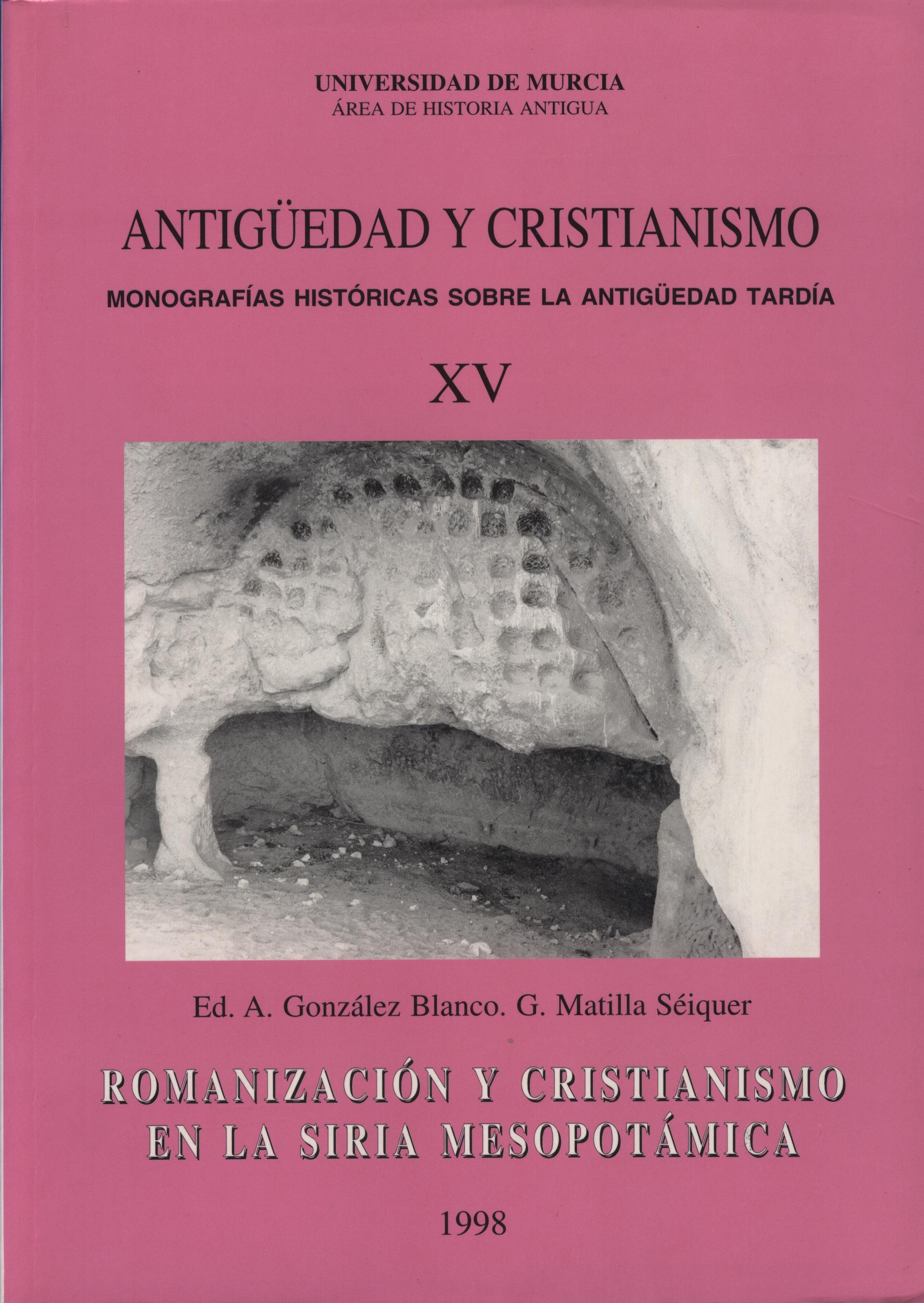
Romanization and Christianity in Mesopotamian Syria
No. 15 (1998)When in 1989 we joined the archaeological mission that the IPOA had organized in Syria, under the direction of Prof. G. DEL OLMO LETE, we could not foresee what in those lands, distant, we believed then, from the nerve centers of the Roman world , we would have to find. The orientation of archaeological research was and continues to be, for it could not be otherwise, the study of the earth in the stages of the great cultures of the IV-1 millennia BC. C. For this purpose we were excavating and the good work of such works is proved by the two memories of excavations already published on the Te11 Qara QikQ and the three doctoral theses already read based on such works.





















